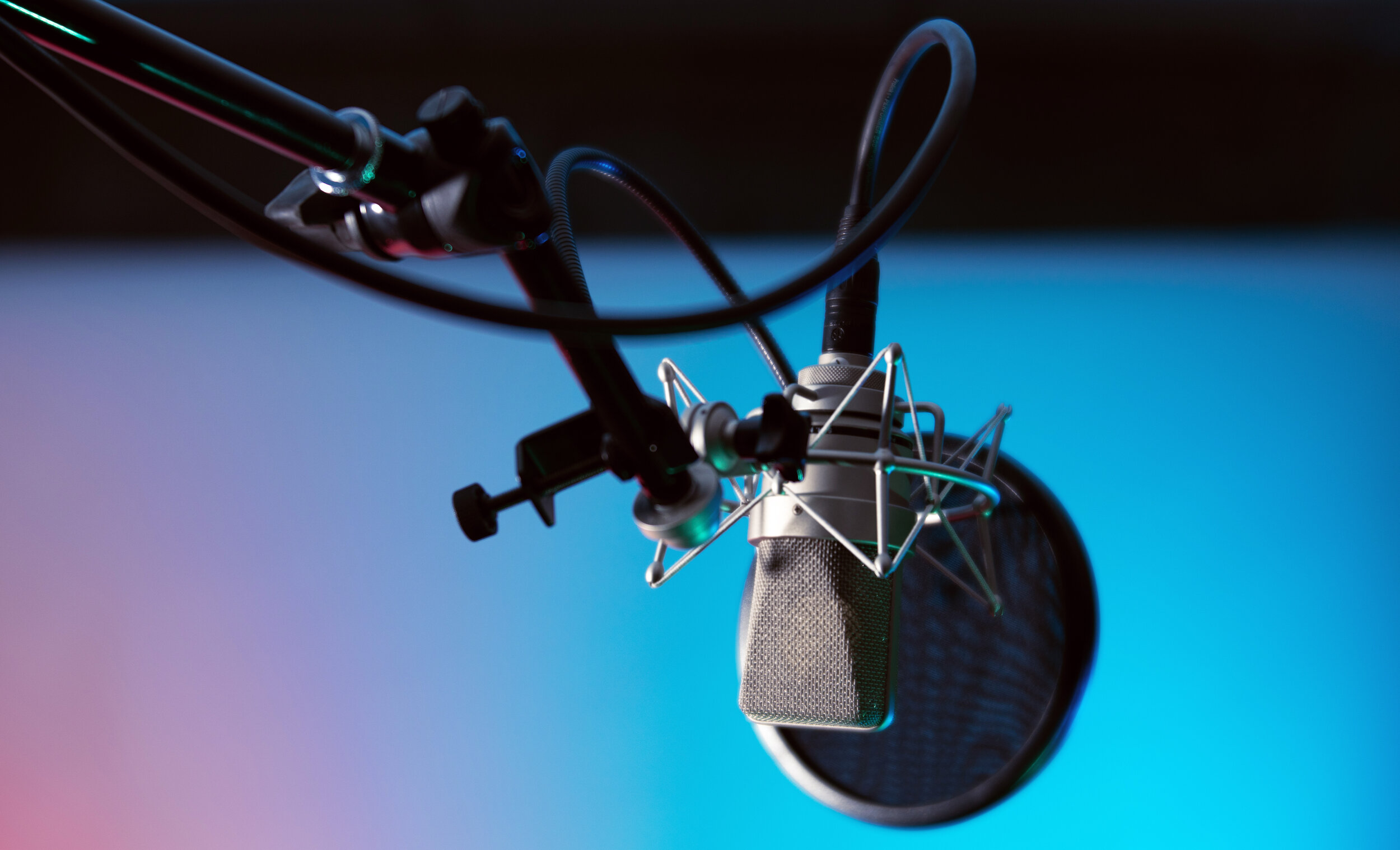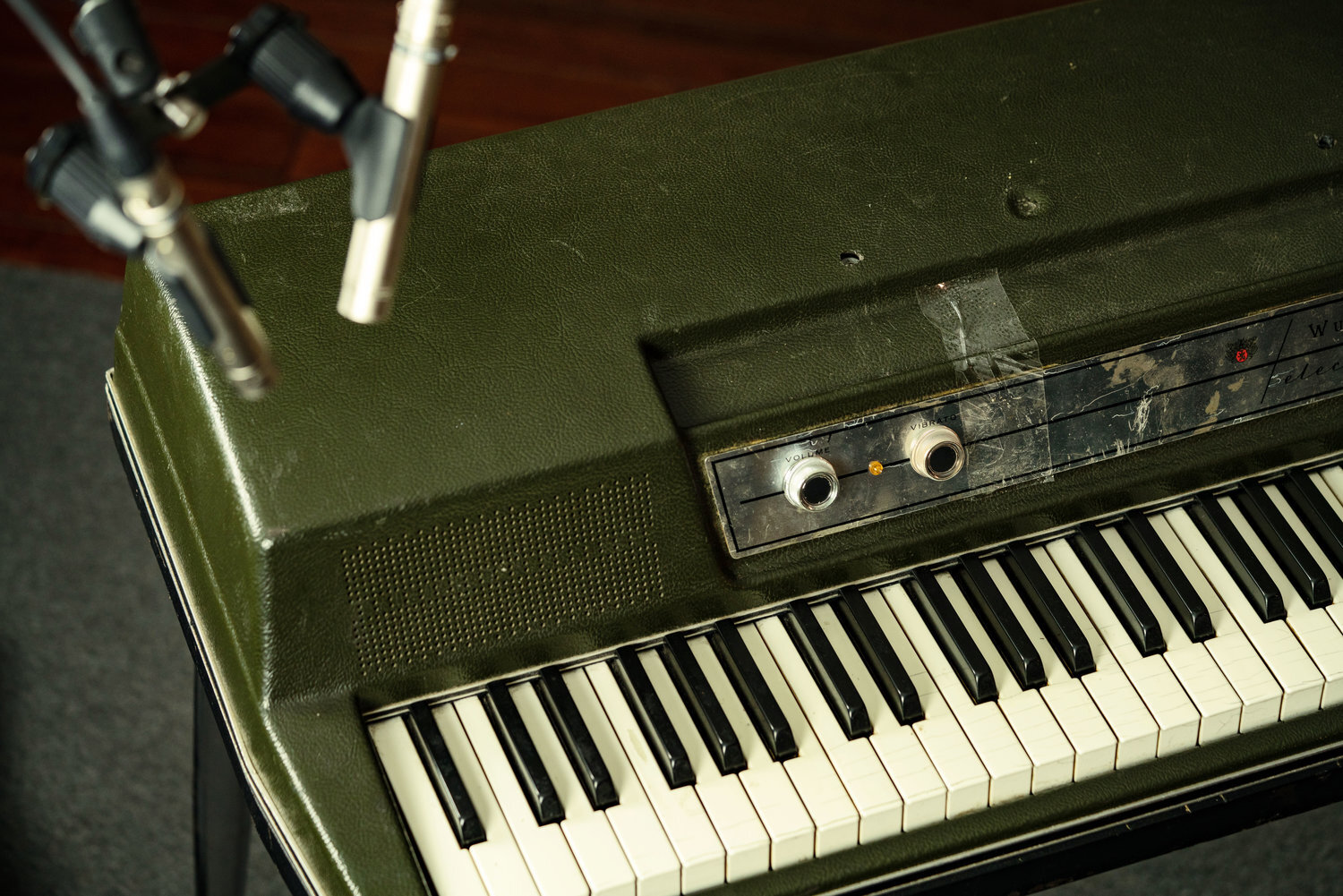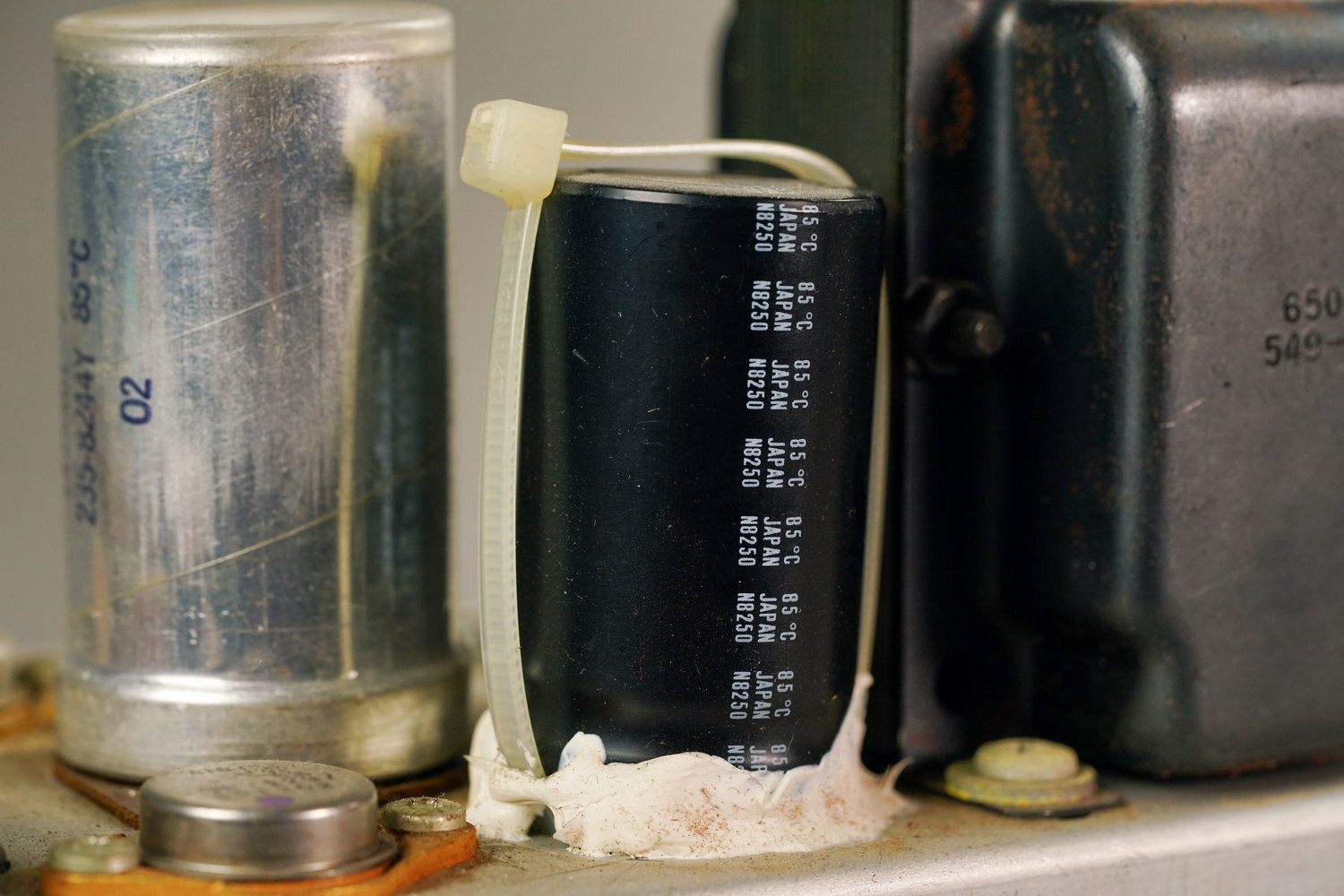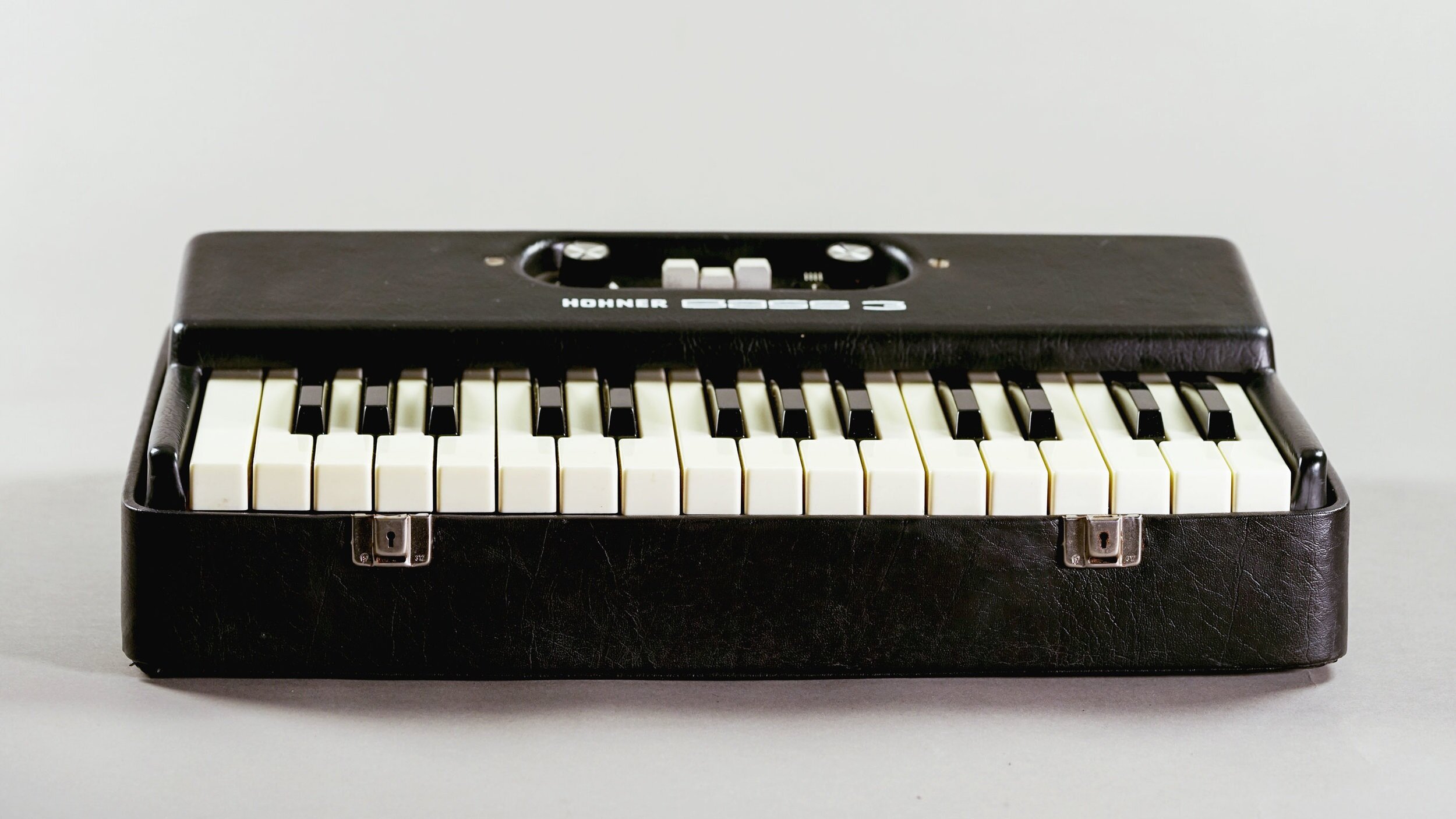Should I use a Dynamic or Condenser Microphone? On the two main types of microphones used in audio recording
This is a Neumann TLM 103, which is a condenser mic. Here it is set up with a pop filter to record vocals.
If you have read our previous article, Audio Recording at Home for Social Media, you should have a good idea on the basic equipment needed to achieve great-sounding audio recording anywhere. Now you might be ready to dive deeper into some microphone specifics, such as what type of microphone is best for your application. In this article, we will leave out specific microphones (such as ribbon mics) that achieve nuanced colors in your audio and stick to two main categories: dynamic and condenser mics. Understanding the difference between these two types of mics will give you a grasp on how to handle most micing tasks thrown your way.
The best way to know which type of microphone to use and when is by understanding generally how they work. Unless you are familiar with makes and models of microphones, the untrained eye can’t necessarily identify a microphone type from the exterior. The difference between the two types of microphones comes down to the mechanism within them that captures sound and how it does so.
First a quick note on mounting a mic versus holding it
For audio recording, where quality matters, anytime you can mount a microphone using a mic clip and stand, you should do so. Mounting the microphone will eliminate rumble or rattling sounds causes by handing a live mic. Most dynamic microphones come in a ‘hand-held’ form factor, but this does not mean you need to hold them while recording. Live reporters do this so they can get a close area mic (that won’t pick up surrounding sounds) close to their moving subject’s voice, or because they are on site and doing their recording on the fly. When you are recording at home, you have the luxury of staying put and mounting your mic.
How does a Dynamic Microphone work?
Here we are recording this Vesper guitar amplifier with a Neumann KLM 184, a bullet-style condenser microphone.
A dynamic microphone uses a thin, small piece of metal (called a diaphragm) that is attached to a coil of wire. When sound hits the thin metal diaphragm, the diaphragm vibrates slightly and moves the coil. The coil is wrapped around a magnet, and, when the coil moves, the magnetic field is altered. The movements of the coil within this magnetic field make an electric signal which is directly related to the sound that it is picking up.
How does a Condenser Microphone work?
A condenser microphone operates similarly to a capacitor (and, in fact, condenser is an old word for capacitor). A condenser mic uses two thin metal plates positioned closely together. The front plate acts as a diaphragm that moves when presented with sound. The back plate is supplied with a voltage. When the diaphragm moves, the varying distances between the plates create varying capacitances, which translate into sound. The fact that the system needs a voltage applied to the back plate in order to work is why we apply phantom power to condenser microphones (although some smaller mobile condenser microphones have the option for a battery).
How is a Dynamic microphone used?
Because of its design, a dynamic picks up sound best at distances ranging from roughly 0.5” to 10”. The advantage of this near field of sensitivity is that when you are recording a few inches away, other sounds that are further away will be more-or-less rejected and much less audible than your nearby primary sound source. The advantage of this is you can be more specific with what you pickup with a dynamic microphone. You can use a dynamic microphone on just about everything, but here some common uses/scenarios for dynamic mics:
Micing multiple individuals’ voices sitting around a table
Close micing a guitar amplifier (and not picking up other instruments in the room as much)
Close micing a voice where you do not want to pickup background noise
Micing one or more speakers or vocalists on a stage when you need to avoid picking up other instruments or creating feedback
How is a Condenser microphone used?
Condenser microphones will pickup a larger and further field of audio. That is not to say that their input level can’t be turned down to pick up less, but they work in a way where they capture more space. Many consider condenser microphones to sound more defined than dynamic microphones. They will capture more harmonics, more nuance and give you a truer sound. For this reason they are the choice for recordings where high definition is desired, and there is good acoustical isolation and less room noise. A condenser microphone can be used for a broad range of sound sources, but here are some common scenarios where a condenser is a good choice:
Here we are recording a Wurlitzer 203w using a Shure Beta 58A (a dynamic microphone).
Micing a vocalist in a isolation booth
Micing an acoustic guitar to capture definition
Micing a group of singers
Micing an acoustic piano
Recording sound effects or doing foley
Recording a podcast voice in a quiet or acoustically treated room
So Which Microphone Should I Choose?
When selecting either a dynamic or condenser microphone for your specific recording task, you should first identify what it is you are doing, and what your environment is. You should think about the amount of space you intend to record. Do you want to record one sound source very locally and nothing else, or do you want to capture a room? You should also ask yourself if you want extremely high clarity (usually for music or high-production) or do you just want good crisp signal. Ultimately, you can get great results with either kind, and depending on where or what you are recording can adjust your settings and techniques in order to maximize the advantages of your chosen microphone. .
Further Reading
Browse all of our articles on restoring vintage gear. Or, click on an image below.







